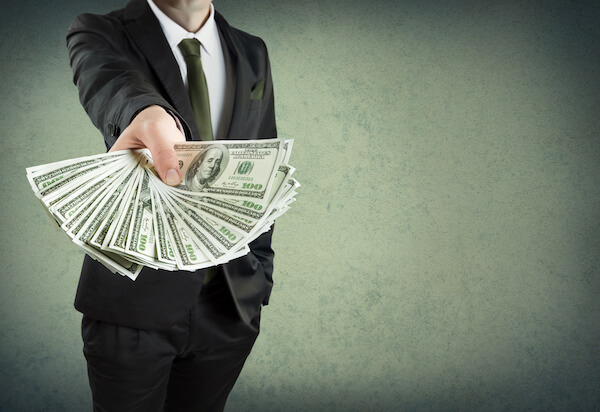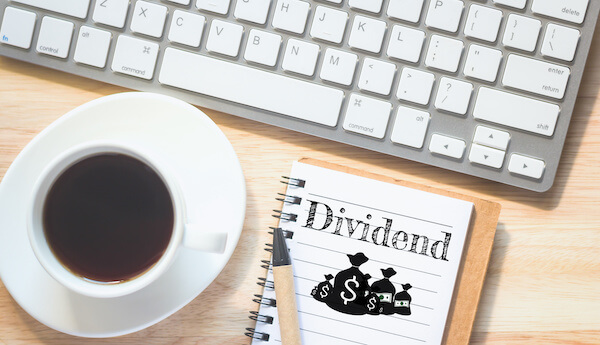
Cash dividends are mightier than they sound. Wondering what exactly that means? Imagine this. What if you could sit on the beach sipping a nice icy cold drink and know that the companies you’ve invested in over the years are depositing money into your account?
That kind of passive income is exactly what cash dividends can deliver. Investors who strategically prioritize stocks that pay sustainable cash dividends are setting themselves up for financial success. It’s called income investing and it’s easier to master than you might think.
The icy cold drink on the beach scene can become your reality. Wondering how? You’re already on your way by reading this article. It’s important to understand what cash dividends are and how they work. Keep reading. We’ll cover all that as well as what action to take in order to get started investing in companies who pay those kinds of dividends.
What Are Cash Dividends?
When companies operate, they earn income. From there, they can reinvest that income into their business, or they can choose to share some of it with stockholders in the form of cash payments — also known as cash dividends.
Stockholders can choose to cash out the payment or reinvest the cash dividends to purchase additional shares of the company’s stock.
Effect on Financial Statements
Companies make money and companies have expenses. What they have left over is called retained earnings as a line item on the company’s balance sheet. Dividends are reported as cash outflow in a company’s statement of cash flows. The company’s income statement is not impacted by cash dividends.
These retained earnings are then usually used to reinvest in the company, pay dividends, or pay off any debt the company may have.
Cash Dividends: Behind the Scenes
There is no mandate for decision-makers to share the company’s profits with investors. The company could be using those funds to further build the business with investments in real estate, technology, and so on. So why would they share? There are a few reasons, and we’ll dive into them below.
Customer Loyalty
Established companies and even those just starting out who can afford to do so will declare cash dividends on a regular basis — like an annual dividend or a quarterly dividend — to keep investors loyal. It’s like a reward to investors for supporting the company.
Some companies are very strategic when determining the amounts of their dividend payouts. Paying dividends communicates a powerful message that the company is confident about future performance and financial strength. They know that dividends attract investors and can drive demand for their stock.
Maintaining Important Financial Ratios
Dividends also help maintain important financial ratios. For example, a company’s dividend payout ratio helps investors understand if the dividend is sustainable relative to the net income of the company. Ultimately and officially, the company’s board of directors will declare the issuing of dividends. That same board also decides if the dividend will remain the same, increase, decrease, or stop altogether.
Often the stock market reacts negatively if a company reduces or discontinues its dividend. It’s for this reason that investors should check the dividend payout ratio. In other words, be sure to check that a company hasn’t become “addicted” to issuing dividends even though earnings no longer justify a dividend payout.
Learning the Lingo of Cash Dividends

To further understand cash dividends, learning a few key terms will go a long way:
Important Dates
First, let’s discuss a few important dates.
The declaration date is when the board of directors announces that it has approved the dividend payment.
Stockholders become shareholders of record on the record date, which is the day they are deemed eligible to receive the dividend payment.
Finally, the ex-dividend date is the cut-off date that draws a line in the sand between existing shareholders who are eligible to receive the dividend and new shareholders who are not eligible to receive dividends.
Generally, the ex-dividend date is one business day before the record date. So if you bought stock on its ex-dividend date or later, you aren’t eligible to receive the dividend.
Different Types of Cash Dividends
There is more than one type of cash dividend. Companies that generate especially lucrative results in a given period can issue special dividends. These are separate and apart from the regular dividends that are paid each year or each quarter.
Special dividends can be declared after the company sees strong earnings results and can pass along some of those profits directly to shareholders. Or the special dividend can happen when a company makes changes to its financial structure or sells off a division or a subsidiary company.
Although quite rare, special dividends do happen and they do not have to be at the same per share rate as the regular dividends. In fact, Microsoft (NASDAQ: MSFT) issued a special dividend back in 2004 for $3 per share. The company paid out a whopping $32 billion to its shareholders. The normal dividend was only $0.04 per share.
Cash Dividends vs. Stock Dividends
Cash dividends are not the only type of dividend a company can issue. Inevitably, investors will wonder which are “better” — cash dividends or stock dividends. And the answer, as you might have already guessed, is it depends.
For stockholders that want instant gratification, the cash dividend might seem like the better option, but that’s not always true.
Dividends can be paid in cash or in stock. Most corporations pay dividends in cash. With a stock dividend, the company essentially distributes more shares to the investor.
Both are issued based on how many shares of stock the investor owns. Cash dividends are typically taxable, while stock dividends are not usually taxed.
Plus, unless the stockholder has a dividend reinvestment plan set up, they can miss out on growth opportunities. Consider that in 1986, Bill Gates owned 100 shares of Microsoft (NASDAQ: MSFT), and through stock splits and stock dividends, those 100 shares turned into 28,800 after 25 years.
Getting Started With Cash Dividends
To add dividend income to your portfolio, it’s important to begin familiarizing yourself with the best dividend stocks out there.
Take a look at the company’s payment history and see if dividends have been steadily increasing over the past few years. Do your due diligence to get a handle on whether you think the company can continue to produce the kind of cash flow required to maintain and continue to grow those payments.
Take Advantage of Opportunities to Learn More About Cash Dividends

Now that you have the basics of cash dividends covered, it’s time to continue building on that foundation with all the information that’s available to you.
In this article, we’ve only lightly touched upon how to use cash dividends to supercharge your income investing strategy. Keep up the momentum by signing up for our upcoming Forever Dividends Masterclass that begins in early October. This course will include four live classes, hand-outs, and homework.





